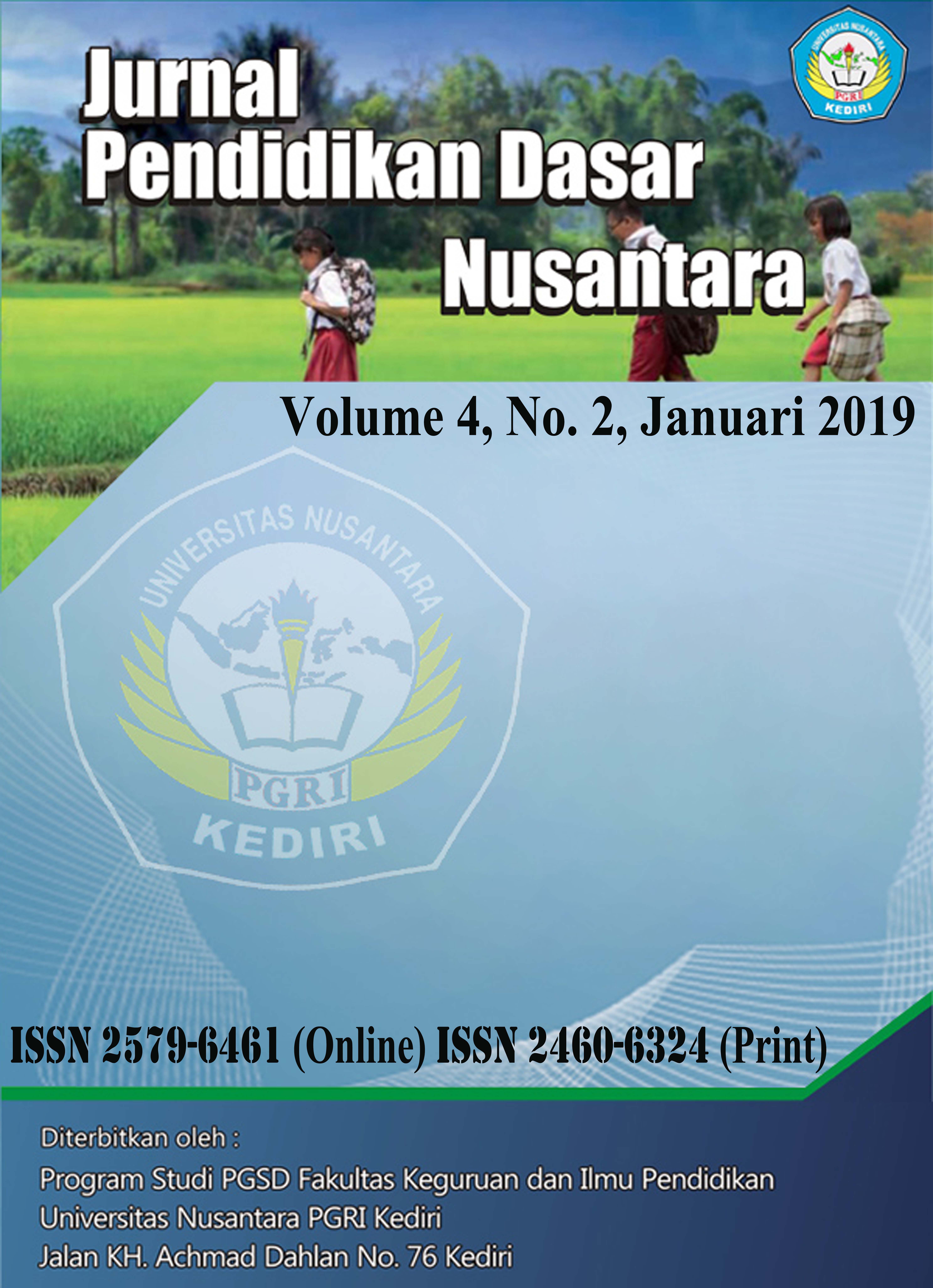Analisis Kesantunan Berbahasa pada Siswa Kelas IV SD Negeri 1 Wonorejo Kecamatan Sumbergempol Kabupaten Tulungagung Tahun Ajaran 2017/2018
DOI:
https://doi.org/10.29407/jpdn.v4i2.12189Abstract
Abstract :The purpose of this study is to analyze language politeness in a student's speech that obey and violate the principles of politeness in SD Negeri 1 Wonorejo Academic Year 2017/2018. The methods used in data collection is the observation and interviews are supported by recording techniques and record techniques. The data that have been obtained is then analyzed using the principles of politeness of the rules which have been put forward by Geoffrey Leech. Instruments used in this study are observation sheets and interview guides. The results of this study found the form of polite and disrespectful speech in the fourth grade students of SDN 1 Wonorejo based on Leech's politeness principle. In the observation result the number of maximally single complaint utterances as much as 23 utterances and double maxim as much as 4 speeches. In addition, the number of single maximally infringement sessions of 20 speeches, while double maximizing violations of 6 speeches. In the result of a single maximally single adherence speech interview of 8 speeches, and a single maximal offense of 16 speeches. Single maximization and offense include, maxim of wisdom, maxim acceptance, maxim of generosity, maxim of humility, maxim of suitability, and maxim of conclusions. Double maximizing includes, maximizing wisdom and acceptance, maximization of wisdom and humility, maxim of generosity and humility, and maxim acceptance and suitability. Double maximal offenses include, maxim acceptance and humility, maxim of generosity and humility, and maxim of wisdom and generosity.
Keywords : Language Politeness, Principles of Politeness, Speech.
Downloads
Downloads
Published
Issue
Section
License
Authors who publish with this journal agree to the following terms:
- Copyright on any article is retained by the author(s).
- The author grants the journal, the right of first publication with the work simultaneously licensed under a Creative Commons Attribution License that allows others to share the work with an acknowledgment of the work’s authorship and initial publication in this journal.
- Authors are able to enter into separate, additional contractual arrangements for the non-exclusive distribution of the journal’s published version of the work (e.g., post it to an institutional repository or publish it in a book), with an acknowledgment of its initial publication in this journal.
- Authors are permitted and encouraged to post their work online (e.g., in institutional repositories or on their website) prior to and during the submission process, as it can lead to productive exchanges, as well as earlier and greater citation of published work.
- The article and any associated published material is distributed under the Creative Commons Attribution-ShareAlike 4.0 International License

































